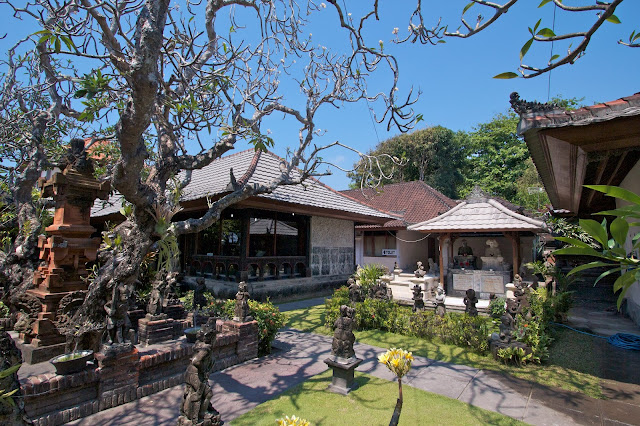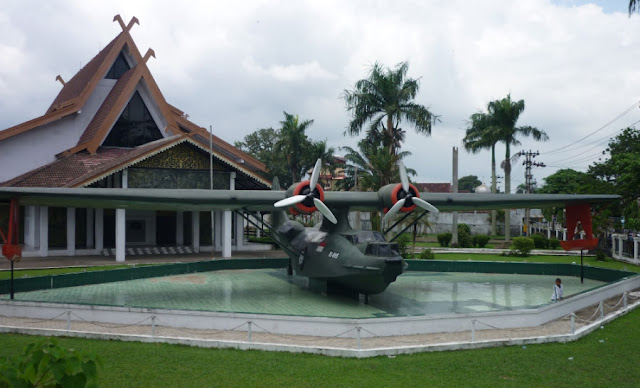Once upon a time, the King of Bantar Angin Kingdom named Kelana Swadana was going to propose for marriage to a beautiful girl, the daughter of Kediri King. Unfortunately, Kelana Swadana`s journey to Kediri was stopped because of the cruel blockade done by a group of wild animals namely Singobarong which guarded the area of Lodaya forest, in which Kelana Swadana had to pass it to reach Kediri. A fierce combat between Singobarong and the entourage of Kelana Swadana could not be avoided anymore at the time.
Commemorating the story above, a traditional performing art namely
Reog ponorogo is held. The order of a Reog performance follows the order of the story about the fierce combat between Kelana Swadana and Singobarong. A Reog performance is usually begun by six or eight men – dancers – in black clothes and wearing red masks. Those dancers perform a lively dance representing the angered Singobarong in the story of Kelana Swadana. The next order in a Reog performance is a stately dance performed by around six to eight girls – in some other performance my also be performed by men in women`s dress – presenting kuda kepang (a plaited bamboo sheet shaping out like a horse) dance.
The second fragment of a Reog performance is the core which is greatly influenced by a situation wherein the Reog performance is taking place. A Reog performance is dominated by love story when someone holding marriage celebration invites a Reog performance group. Otherwise, a Reog performance will be dominated by bravery and heroic story when it is held to commemorate Indonesia Independence Day.
The end of a Reog performance is signed by the appearance of Singobarong performed by a man wearing a big mask representing Singobarong in the story of Kelana Swadana. The Singobarong mask is usually weighting around 50 to 60 kilograms but few people know that Singobarong mask is worn by a man only by biting a branch of wood installed behind the mask. The only special man with magical and supernatural powers can perform the figure of Singobarong in a Reog performance.
For you who want to see directly a Reog performance, just come to Ponorogo District, East Java, on August 17th, along the Indonesia Independence Day. Not only Reog performance, but also cultural festival and parade are usually organized at the time.
A Reog performance is usually organized in a special occasion such as an Independence Day or a marriage ceremony. A Reog performance needs vast space since in the middle of the performance, they – the dancers – are inserted the spirit of dead people hence the performance seems so liar. Warok – the Reog group leader – recites some mantras asking for successful performance, prior to the performance begins.
There is no strict story order within a Reog performance. The dancers commonly follow the scenario arranged by a warok, however. The interaction between the dancers and the warok should be intensified well during a Reog performance. By that way, a Reog performance seems so attractive enough since sometimes, there is a good interaction happening between Reog dancers with the audiences coming to watch the performance.
Reog Ponorogo Location
In almost sub-districts in
Ponorogo District, East Java Province, you can easily find Reog performances that are organized by individual – in a marriage ceremonies – or institution – public cultural parade. For the routine performance organized monthly or annually, you can find them in the heart of Ponorogo City.
You can reach Ponorogo District by route from Surabaya, the capital of East Java Province, for about 200 km. You can take any public transport to reach the location. You can easily find some hotels ranging from the cheapest to most expensive quality around Ponorogo District.
















